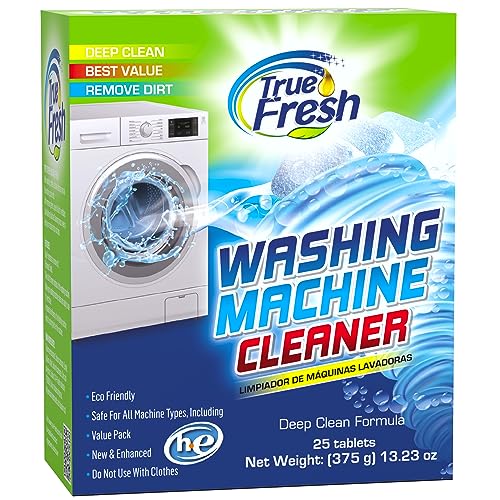Have you ever pondered the convenience of effortlessly adjusting your home's temperature from anywhere at any time? Imagine the ease of optimizing energy usage and comfort with just a few taps on your smartphone.
The world of wireless thermostats offers a plethora of options, each boasting unique features and benefits that cater to various household needs.
But how do you navigate through the multitude of choices to find the ideal wireless thermostat for your smart and efficient home temperature control?
Join us as we uncover the top 15 wireless thermostats that are revolutionizing the way we manage our indoor climate, providing insight into their functionalities and helping you make an informed decision for a more comfortable and energy-efficient living space.
Key Takeaways
- There are a wide variety of wireless thermostat models and features available, including programmable options, compatibility with various heating systems, and compatibility with smart home platforms.
- Wireless thermostats offer energy-saving features that can help reduce heating and cooling costs, such as adjusting temperature based on humidity and utilizing geofencing technology.
- Remote access and control through smartphones or tablets allows for flexibility and convenience in adjusting thermostat settings from anywhere.
- Warranty, support, and smart home integration are important factors to consider when selecting a wireless thermostat, as they can impact functionality, ease of use, and integration with other smart devices.
Honeywell Home RTH6580WF Wi-Fi 7-Day Programmable Thermostat
The Honeywell Home RTH6580WF Wi-Fi 7-Day Programmable Thermostat stands out as the ideal choice for homeowners seeking energy-saving convenience and remote control functionality. With its ENERGY STAR certification, this thermostat offers monthly energy reports and personalized tips to reduce energy use, along with potential energy savings rebates and enrollment in utility demand response programs.
Its compatibility with voice assistant devices and intuitive controls make it a user-friendly option. The thermostat's 7-day, 4 periods per day programming and the ability to be programmable and reprogrammable on the fly provide flexibility. Additionally, the remote access and control from a smartphone or tablet, along with a user-friendly app, add to the convenience.
Positive reviews highlight its affordability, functionality, and energy-saving benefits, making it a desirable choice for homeowners looking to optimize their energy usage.
Best For: Homeowners seeking energy-saving convenience and remote control functionality.
Pros:
- ENERGY STAR certified with potential energy savings rebates
- Compatible with voice assistant devices for added convenience
- Remote access and control from smartphone or tablet for flexibility
Cons:
- May require C-wire power adapter for installation in some homes
Honeywell Home C-Wire Adapter for Wi-Fi Thermostats and RedLINK® 8000 Series Thermostats (THP9045A1098)
Optimizing home temperature control without a C-wire is made simple with the Honeywell Home C-Wire Adapter. This adapter provides an ideal solution for homeowners seeking easy installation and compatibility with various heating systems. The C-Wire Power Adapter enables the compatibility of Honeywell Home smart thermostats with most homes that lack a common wire.
The adapter works for applications where the existing thermostat doesn't have a common wire but has Y and G wires attached. It offers easy push terminals and an adhesive mount for quick installation. However, it should be noted that this adapter doesn't work with electric baseboard heat.
The adapter is compatible with forced air (gas, oil, or electric), hot water and steam, and heat pumps with electric backup. Positive customer reviews highlight the ease of installation and compatibility. However, some users noted the need for a power supply or batteries for certain systems and occasional issues with local utility approval or specific system compatibility.
Ecobee Enhanced Smart Thermostat – Programmable WiFi Thermostat
Enhanced with smart technology and designed for easy installation, the Ecobee Smart Thermostat offers an efficient solution for those seeking to optimize their home's temperature control. This programmable WiFi thermostat allows users to save up to 26% per year on heating and cooling costs, automatically adjusting the temperature when they're away and preheating or precooling the home before arrival. It also adjusts temperature based on humidity, enhancing comfort and energy efficiency.
The thermostat is compatible with various HVAC systems and integrates seamlessly with smart home platforms and apps, including Siri, Alexa, Google Assistant, Apple HomeKit, SmartThings, and IFTTT. Additionally, the inclusion of a SmartSensor for room temperature measurement further enhances its functionality. With positive customer feedback on easy installation and setup, along with a 3-year manufacturer warranty, the Ecobee Smart Thermostat proves to be a reliable and convenient choice for smart home temperature control.
Best For: Homeowners looking for a smart thermostat with easy installation, energy-saving features, and seamless smart home integration.
Pros:
- Energy-efficient with up to 26% savings on heating and cooling costs
- Seamless integration with various HVAC systems and smart home platforms
- Includes SmartSensor for accurate room temperature measurement
Cons:
- Initial confusion and lack of instructions reported by some users
Sensi Lite Smart Thermostat, Wi-Fi Programmable, Compatible with Alexa (ST25)
For those seeking a straightforward and user-friendly solution, the Sensi Lite Smart Thermostat offers a hassle-free installation and convenient control through the mobile app. With its built-in level and simple step-by-step instructions, the DIY installation process is quick and easy, especially since it works with the HVAC equipment found in most homes.
The top-rated mobile app allows for the management of home HVAC systems from anywhere, at any time. While it typically doesn't require a common wire for most systems, some users have reported issues with connectivity and compatibility with certain wiring setups.
Despite these reported issues, many users have found the sleek black design and overall functionality to be a cost-effective and efficient upgrade.
Best For: Users who want a simple and cost-effective smart thermostat solution for their home HVAC system.
Pros:
- Hassle-free installation with built-in level and simple step-by-step instructions
- Convenient control through a top-rated mobile app
- Sleek black design and cost-effective functionality
Cons:
- Connectivity issues and compatibility with certain wiring setups reported by some users
Braeburn 7500 Universal Wireless Kit Thermostat
The Braeburn 7500 Universal Wireless Kit Thermostat is an ideal choice for homeowners seeking a programmable and battery-operated wireless thermostat with compatibility for both residential and commercial heating systems. This thermostat is compatible with conventional and heat pump systems up to 3H/2C, offering flexibility for various heating systems. It's battery-operated, allowing for easy installation without the need for a power source. With features such as adjustable temperature limits, multi-level keypad lockout, and quick reference instruction card, it provides convenient and customizable temperature control.
However, some users have reported wireless connection issues and difficulties with the included plenum sensor. Despite this, the Braeburn 7500 thermostat has received positive feedback for solving temperature inconsistency issues, affordability, ease of installation, and helpful customer support.
Best For: Homeowners and businesses seeking a programmable and battery-operated wireless thermostat with compatibility for both residential and commercial heating systems.
Pros:
- Solves temperature inconsistency issues
- Affordability and ease of installation
- Helpful customer support
Cons:
- Wireless connection issues
Honeywell Wireless Focuspro Thermostat Kit (YTH6320R1001)
With its RedLINK wireless technology and easy installation, the Honeywell Wireless Focuspro Thermostat Kit (YTH6320R1001) is an optimal choice for homeowners seeking reliable, hassle-free temperature control.
This kit includes the Wireless FocusPRO 5-1-1 Programmable Thermostat, Equipment Interface Module, and Return Air Sensor. The Equipment Interface Module (EIM) manages communication from the wireless devices, while the Return Air Sensor maintains safe indoor temperatures in case of power loss at the thermostat.
The RedLINK wireless technology ensures no interference with other wireless devices in the home. Installation is straightforward, with clearly marked wiring connections and the ability to relocate an existing thermostat. Users appreciate the separate control for different rooms/zones and the option to add an internet gateway for remote access.
The positive feedback on performance and ease of installation makes this thermostat kit a popular choice for efficient home temperature control.
Best For: Homeowners seeking hassle-free temperature control with separate room/zonal control and remote access options.
Pros:
- Easy installation with clearly marked wiring connections
- Separate control for different rooms/zones
- Option to add internet gateway for remote access
Cons:
- Requires common wire for power to the control unit
Sensi Touch Smart Thermostat by Emerson (ST75S-Silver)
The Sensi Touch Smart Thermostat by Emerson (ST75S-Silver) offers a programmable and Wi-Fi enabled solution for controlling home temperatures. It is the ideal choice for individuals seeking modern, energy-efficient temperature management.
Its easy DIY installation, sleek design, and intuitive menus make it a popular choice among users. The thermostat is Energy Star certified, potentially saving about 23% on HVAC energy. Users can control it from anywhere using the Sensi mobile app. It also offers smart maintenance features to monitor HVAC system performance and efficiency.
While some users have experienced initial setup and Wi-Fi connectivity issues, the overall feedback on its ability to maintain desired temperatures and its compatibility with other systems like Alexa has been positive. Additionally, the manufacturer's warranty is available upon request, providing added assurance to customers.
Best For: Homeowners seeking a modern, energy-efficient, and Wi-Fi enabled thermostat solution for easy temperature control.
Pros:
- Energy Star certified, potentially saving about 23% on HVAC energy
- Easy DIY installation with built-in level and step-by-step app instructions
- Smart maintenance features to monitor HVAC system performance and efficiency
Cons:
- Initial setup and Wi-Fi connectivity issues reported by some users
Braeburn 7500 Universal Wireless Programmable Thermostat
Ideal for homeowners seeking a versatile and highly efficient temperature control solution, the Braeburn 7500 Universal Wireless Programmable Thermostat offers advanced features and easy installation.
With options for 7-day, 5-2 day, or non-programmable settings, this thermostat provides flexibility to suit various schedules. Its large 5 square inch backlit display ensures easy readability, while the auto or manual changeover and residential or commercial modes cater to diverse needs.
The battery-operated design allows for total installation flexibility, and compatibility with 2 or 3 wire hydronic zone systems further enhances its adaptability. With features such as adjustable temperature limits, multi-level keypad lockout, and programmable fan control, this thermostat delivers precise control and energy efficiency.
Additionally, its superior wireless range, long battery life, and compatibility with optional wireless indoor and outdoor sensors make it a reliable and comprehensive solution for effective home temperature management.
Best For: Homeowners looking for a versatile and energy-efficient wireless thermostat with advanced features and easy installation.
Pros:
- Flexible programming options to suit various schedules
- Large backlit display for easy readability
- Compatibility with optional wireless indoor and outdoor sensors for comprehensive temperature management
Cons:
- Battery-operated, may require periodic battery replacement
Honeywell Home Manual 4 Wire Baseboard/Line Volt Thermostat (CT410B1017)
When seeking a durable and non-programmable line voltage control solution for electric baseboards, convectors, or non-inductive rated fan-forced heaters, the Honeywell Home Manual 4 Wire Baseboard/Line Volt Thermostat (CT410B1017) offers reliable temperature management with its bimetal temperature sensor and positive OFF double-line break feature.
This thermostat has a temperature range of 40°F to 80°F and can handle a power of 2640W @ 120 Vac, 22A resistive; 5280W @ 240 Vac, 22A resistive; 5263W @ 277 Vac, 19A resistive. It can control a single electric baseboard heater or multiple electric heaters as long as the combined load doesn't exceed 5280W.
With a compact design and a straightforward mechanical knob for control, this thermostat is a practical choice for maintaining comfortable temperatures in your home.
Best For: This thermostat is best for homeowners looking for a simple and reliable line voltage control solution for their electric baseboards, convectors, or non-inductive rated fan-forced heaters.
Pros:
- Reliable bimetal temperature sensor for worry-free operation
- Positive OFF double-line break feature for easy installation
- Can control single or multiple electric heaters within specified power limits
Cons:
- Non-programmable, may not be suitable for those seeking advanced scheduling features
Honeywell Home T5 WiFi Smart Thermostat, 7 Day-Programmable Touchscreen (RTH8800WF2022)
For those seeking a WiFi-enabled thermostat with geofencing technology and energy-saving capabilities, the Honeywell Home T5 Smart Thermostat is an excellent choice.
The 7-day programmable touchscreen and compatibility with Alexa make it a convenient option. Its energy-saving features, including the use of scheduling, can save customers 8-16% on heating and cooling bills. Additionally, it's Energy Star certified, eligible for energy savings rebates, and offers monthly energy reports with personalized tips for reducing energy use.
Although some users experienced WiFi connection issues, positive feedback highlights its ease of installation and use. The modern design and compatibility with Apple HomeKit and Siri add to its appeal. With competitive pricing and a voluntary 30-day return guarantee on Amazon.com, the Honeywell Home T5 WiFi Smart Thermostat offers value for the price.
Best For: Those looking for a WiFi-enabled thermostat with geofencing technology and energy-saving features.
Pros:
- 7-day programmable touchscreen and Alexa compatibility
- Energy-saving scheduling that can save customers 8-16% on heating and cooling bills
- Modern design with easy-to-read temperature display and smartphone control via WiFi
Cons:
- Some users experienced WiFi connection issues
Honeywell Smart Color Thermostat (RTH9600WF)
Boasting a customizable color screen and the ability to control home temperature from anywhere using the app or compatible smart home partners, the Honeywell Smart Color Thermostat (RTH9600WF) is a top choice for those seeking an energy-efficient and user-friendly solution for home temperature control.
This ENERGY STAR certified thermostat not only offers on-screen comfort information but also provides the opportunity to save energy and receive rewards through energy savings rebates and eligibility for local utility's demand response programs.
However, its installation may require assistance or support, as a C-wire is required, and compatibility with some heating systems may necessitate a C-wire power adapter. Despite some customer service issues, users appreciate its learning ability, smart features, and overall ease of use.
When considering a smart thermostat, the Honeywell Smart Color Thermostat (RTH9600WF) stands out for its attractive appearance and practical functionality.
Best For: Homeowners seeking an energy-efficient and user-friendly smart thermostat with customizable features and remote control capabilities.
Pros:
- Customizable color screen and on-screen comfort information
- Energy Star certified with potential energy savings and rewards
- Control from anywhere using the app or compatible smart home partners
Cons:
- Requires a C-wire for installation
Aowel Non-Programmable Thermostat for Home
Ideal for middle-aged and elderly users, the Aowel Non-Programmable Thermostat for Home offers user-friendly features and compatibility with most 24V HVAC systems.
With its easy-to-read display, large characters, and blue backlight, this thermostat is designed to be accessible and straightforward.
It's suitable for up to 1 heating and 1 cooling single-stage system and is powered by either 24VAC power or 2 AAA batteries, eliminating the need for a common wire (c-wire) on most systems.
Additionally, it allows for separate heating and cooling swing settings and room temperature calibration adjustment, providing personalized comfort control.
While the product has received positive reviews for its performance and ease of installation, some users have expressed concerns about the size of the mounting screws and accessibility for battery replacement.
Best For: Middle-aged and elderly individuals seeking a user-friendly and easily accessible thermostat for their home.
Pros:
- Easy-to-read display with large characters and blue backlight
- Compatible with most 24V HVAC systems
- Separate heating and cooling swing settings and room temperature calibration adjustment
Cons:
- Concerns about the size of mounting screws
Heagstat Programmable Thermostat for Home (5-1-1 Day, up to 2 Heat/2 Cool)
The Heagstat Programmable Thermostat for Home (5-1-1 Day, up to 2 Heat/2 Cool) offers precise temperature control and intuitive programming, making it a reliable choice for homeowners seeking efficient temperature management.
This thermostat is compatible with central gas, oil, electric furnaces, and millivolt single stage systems. It features a 5-1-1 day programmable option with intuitive programming icons, allowing for personalized temperature schedules.
Users have praised its accurate temperature control, support for heat or cool swing setup for energy savings, and room temperature calibration adjustment. The thermostat also provides compressor delay protection. While some users reported initial confusion with certain features, they found the thermostat easy to figure out and operate.
Additionally, the positive feedback regarding its display, programming, and ease of use makes it a compelling option for those in search of a programmable thermostat for their home.
Best For: Homeowners looking for precise temperature control and intuitive programming in a programmable thermostat.
Pros:
- Accurate temperature control with a wide range
- Easy installation and operation
- Compatible with various heating systems
Cons:
- Lack of clear information about certain features
Nashone Wireless Thermostat Outlet with Built-in Temp Sensor Remote Control
With its easy installation and user-friendly remote control, the Nashone Wireless Thermostat Outlet with Built-in Temp Sensor is an excellent choice for anyone seeking convenient and customizable home temperature control. This thermostat outlet features a high-precision temperature sensor on the receiver socket and an LCD display with Celsius or Fahrenheit units. Its flame retardant PC material casing and 3-prong socket with grounded terminal ensure safety. The thermostat outlet can handle a max load current of up to 15A and includes over high and low-temperature and sensor failure alarms. It's compatible with various heating and cooling equipment such as space heaters, wall panel heaters, and electric fireplaces.
While users praise its easy installation and control, some have reported software glitches and limitations in integration with smart home systems like Samsung Smart Things and Alexa.
Best For: This thermostat outlet is best for individuals looking for easy-to-install and user-friendly temperature control for small rooms or specific heating and cooling equipment.
Pros:
- Easy installation and control
- Compatibility with various heating and cooling equipment
- Convenient remote control and programming options
Cons:
- Software glitches and limitations in integration with smart home systems
Amazon Smart Thermostat – Works with Alexa and Ring
Controlling our home temperature with the Amazon Smart Thermostat has become effortless with the integration of Alexa and Ring. This thermostat, built with Honeywell Home Thermostat Technology, not only offers voice control with Alexa but also allows for remote adjustments through the Alexa app.
The thermostat's compatibility with most 24V HVAC systems and its ENERGY STAR certification ensure energy savings and environmental efficiency. Additionally, the thermostat features Hunches, a smart technology that adjusts the temperature based on Alexa's insights about occupancy and sleep patterns.
With its easy installation process, sleek design, and flexible scheduling, the Amazon Smart Thermostat presents itself as a reliable and modern option for efficient home temperature control.
Best For: Homeowners looking for a modern and intuitive heating and cooling solution with voice control and smart technology integration.
Pros:
- Effortless installation process
- Energy savings through learning heating and cooling patterns
- Flexible scheduling based on daily routines
Cons:
- Requires a C-wire power or power adapter kit (sold separately)
Factors to Consider When Choosing a Wireless Thermostat

When choosing a wireless thermostat, we need to consider several important factors.
Firstly, compatibility with our HVAC system is crucial to ensure seamless integration and optimal performance.
Additionally, we should assess the installation requirements, energy-saving features, user interface design, and remote access options to find the best fit for our home.
Compatibility With HVAC
To ensure seamless integration with your HVAC system, it's crucial to verify compatibility with most 24V HVAC systems when selecting a wireless thermostat. This ensures that the thermostat can effectively control the heating, ventilation, and air conditioning systems in your home.
Additionally, it's important to determine if a C-wire power adapter is necessary for installation, especially for certain systems. Checking compatibility with your specific heating and cooling system, such as gas, oil, electric, forced air, heat pump with electric backup, hot water and steam, or hydronic zone systems, is essential.
It's also advisable to consider any need for additional accessories or wiring adjustments during installation based on your HVAC system's requirements.
Lastly, check for compatibility with non-programmable, 7-day, 5-2 day, or 5-1-1 day programmable thermostat features to suit your scheduling preferences.
Installation Requirements
After ensuring compatibility with your HVAC system, the next step is to consider the installation requirements when choosing a wireless thermostat. It's crucial to check if your system requires a C-wire power adapter and if the thermostat installation necessitates any wiring adjustments.
Additionally, for specific functionalities, you may need additional equipment such as a return air sensor or outdoor sensor. Ensure that you have access to installation guidance, such as manuals or online videos, to facilitate a smooth and successful setup.
Energy-Saving Features
Considering energy-saving features is essential when selecting a wireless thermostat for home temperature control. Programmable schedules are a key energy-saving feature, allowing optimization of heating and cooling based on occupancy patterns.
Some wireless thermostats go the extra mile by offering energy reports and personalized tips to help reduce energy use and save on heating and cooling costs. Smart thermostats with geofencing technology can automatically adjust temperature settings when the homeowner is away, contributing to energy savings.
Compatibility with energy-saving programs, such as utility demand response programs, can provide additional opportunities for saving energy and reducing costs. Additionally, certain wireless thermostats are designed to work with energy-saving rebates, offering potential financial incentives for energy-efficient use.
These features play a crucial role in making a wireless thermostat an energy-efficient choice for home temperature control.
User Interface Design
When selecting a wireless thermostat for home temperature control, it's crucial to consider user interface design. User interface design involves the careful consideration of visual elements and user interaction, aiming to enhance the overall experience. Factors such as user needs, behavior, and context are essential in ensuring that the interface meets the requirements of the users.
Consistency in design elements, including layouts and colors, is also crucial for creating a user-friendly experience. By prioritizing user interface design when choosing a wireless thermostat, homeowners can ensure that the device not only effectively controls temperature but also provides a hassle-free and enjoyable interface for managing their home environment.
Remote Access Options
Choosing a wireless thermostat includes evaluating the remote access options available and their compatibility with devices for convenient temperature control and adjustments. It's essential to consider the ability to operate and adjust the thermostat from a smartphone or tablet, providing the flexibility to manage temperatures from anywhere.
Additionally, compatibility with voice assistant devices offers the convenience of controlling the thermostat through voice commands. A user-friendly interface and intuitive app are crucial for easy control and programming on the go. The capability to reprogram the thermostat remotely adds flexibility for changing schedules or settings without being physically present.
Positive user feedback on ease of installation, use, and energy-saving benefits indicates the effectiveness of the remote access options in providing a seamless and efficient experience.
Warranty and Support
To make an informed decision when selecting a wireless thermostat, it's crucial to thoroughly review the warranty information and support options available. Checking for available product warranties and return policies can safeguard your purchase.
Additionally, considering the level of customer support and after-sales service provided by the manufacturer or seller is essential. Look for options with reliable warranty coverage and accessible customer support for any troubleshooting needs.
It's important to ensure that the chosen wireless thermostat comes with a robust warranty and accessible support channels for any inquiries or assistance needed. By thoroughly examining the warranty and support options, you can ensure comprehensive coverage and assistance, providing peace of mind with your wireless thermostat purchase.
Smart Home Integration
Considering the benefits of smart home integration, a wireless thermostat with this capability seamlessly connects with other smart devices and systems in the home, enhancing convenience and control.
It allows the thermostat to communicate with voice assistants such as Amazon Alexa, Google Assistant, and Apple HomeKit. With smart home integration, you can remotely control and automate temperature adjustments and schedules using your smartphone or other smart devices.
Additionally, it opens up the possibility of creating personalized smart home routines and triggers based on the thermostat's status or temperature changes. Furthermore, smart home integration may enable energy monitoring and coordination with other smart home devices to optimize energy efficiency.
When choosing a wireless thermostat, the ability to integrate seamlessly with your smart home ecosystem can greatly enhance the overall efficiency and convenience of home temperature control.
Frequently Asked Questions
Can Any of These Wireless Thermostats Be Controlled Remotely Through a Mobile App?
Yes, all of these wireless thermostats can be controlled remotely through a mobile app. We've found that they offer convenient access and control over your home's temperature settings from anywhere.
This feature allows us to adjust the thermostat settings even when we're not at home, providing flexibility and energy savings. It's a great way to ensure a comfortable environment and efficiently manage heating and cooling.
What Is the Average Lifespan of the Batteries in These Wireless Thermostats?
On average, the batteries in these wireless thermostats last around 3 to 5 years. It's important to note that this can vary based on usage and environmental factors.
As the old saying goes, 'good things come to those who wait,' so it's worth considering the longevity of the batteries when choosing a wireless thermostat.
Our research suggests that the lifespan of the batteries is a key factor in maintaining efficient home temperature control.
Are These Thermostats Compatible With Smart Home Systems Like Google Home or Apple Homekit?
Yes, these thermostats are compatible with smart home systems like Google Home or Apple HomeKit. They offer seamless integration and allow us to control the temperature using voice commands or through the respective apps.
This compatibility enhances the overall convenience and efficiency of our smart home setup. Additionally, it provides us with the flexibility to manage our home temperature settings remotely, creating a more comfortable living environment.
Do Any of These Thermostats Have Geofencing Capabilities for Energy-Saving Features?
Yes, some of these thermostats have geofencing capabilities for energy-saving features. They use our smartphone's location to adjust the temperature when we leave or return home.
This helps save energy by reducing heating or cooling when we're away and ensuring the home is comfortable when we return.
It's a convenient and efficient way to manage home temperature and reduce energy consumption.
Are There Any Additional Accessories or Add-Ons Needed for Installation, Such as a C-Wire Adapter or Wireless Kit?
No, additional accessories or add-ons aren't needed for installation. These wireless thermostats are designed to be easily installed without the need for extra components like a c-wire adapter or wireless kit.
The installation process is straightforward and user-friendly, allowing for seamless integration into your home heating and cooling system. You can set up the thermostat without any hassle and start enjoying the benefits right away.
Conclusion
After researching and comparing the best wireless thermostats, we've found the perfect one for our home.
It's amazing how technology has made it so easy to control our home's temperature from anywhere.
We're excited to have a more efficient and smart home with our new wireless thermostat.
It's a small change that will make a big difference in our daily lives.

























